Halo 3

… Writing a reflection on a game of this scale seems redundant. The praising, the “meh”, the hating, the elitist, the non-gamer, the moral crusader, the academic, the economonic – Even the “quirky, new-point-of-view”-style reviews are already too many in the case of Halo 3.
… I played it and liked it.
Open World Games
John Harris writes the “Game Design Essentials” series for Gamasutra, a series focused on looking at a certain part of games, and analyzing 20 different games to learn something about what a designer should think of regarding that part. He started last week by analyzing 20 difficult games and continued this week with 20 open world games.
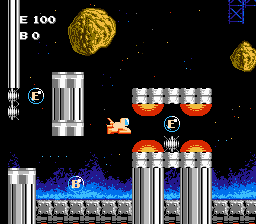
Harris seems to have some problem defining exactly how linear a game should be to avoid being confusing without being.. well, too linear, and being a sucker for exploration gameplay, I don’t like it one bit that he didn’t include either Monster World II or III. The article is still very interesting and pinpoints a lot of the point why exploring virtual spaces is so entertaining to begin with, for example:
“Exploration games live or die, not by their boss fights or powerups, but by how fun the game makes the mere act of navigating corridors and seeing the sights. If you don’t think such things are entertaining then you may not want to develop one.”
Games trivia
I did in fact know that ICO was just a play on the japanese word for walk, “IKU” (in fact, the main character of Shadow of the Colossus, working title ICO 2, is called “Wander”), but I didn’t know that the first ever product released by Sony was a rice cooker. Or that Capcom is short for ‘Capsule Computers’. Or most of the other things in the list.
Super Paper Mario
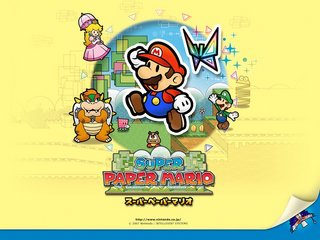
Super Paper Mario is supposed to be some kind of action-based sequel to the brilliant Gamecube RPG Paper Mario – the Thousand Year Door. This makes it a platform game borrowing a lot of ideas from a RPG borrowing ideas from a platform game… But to avoid getting lost in the recursive borrowing, the general idea is SMB 1 with the characters, leveling system and special moves of Paper Mario. And stupid amounts of flirting with the geek crowd, but I’ll get to that later.
… In fact, I’ll get to that now because the above line is a good-enough description of the gameplay. Super Paper Mario is quite obviously intended for guys who grew up with Nintendo in the 80s, guys like me. Everywhere you look you’ll find references to earlier Mario games – in fact, it seems that delivering retro jokes was developer Intelligent System’s first priority. The result of this is that the game fails in other areas.
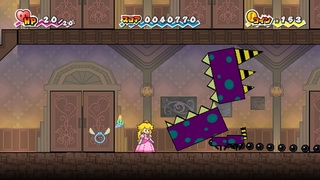
Super Paper Mario has great controls, tons of different moves and the quirky art-style that contributed to Thousand Year Door’s brilliance, but it lacks in the level design department. While sometimes aesthetically well-made, they are all very flat and boring – even SMB1 had more interesting levels. The design also fails in other areas where annoying sections has to be completed – in one place, you have to run in a hamster wheel for several minutes, in another you have to defeat 20 enemies in separate duels (complete with monologues before and after). This makes the game very tedious to play.
I find Super Paper Mario hard to understand. Does it get good review scores since it packs such a heavy load of nostalgia? Why did they look at a RPG for level design when they had some of the most brilliant platformers in the history of videogames to borrow freely from? it is hard to have a fair opinion about a game with such a lineage when it disappoints – especially when it embraces that lineage so extensively.
Super Paper Mario is not a horrible game, it just could have been so much better if it borrowed more than visual themes from earlier games.
Logigun
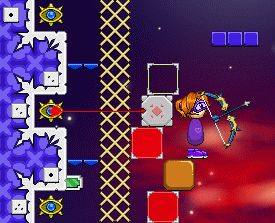
Logigun is a puzzle game in which the player, in order to get forward, must use one of five different guns. While none of the guns (except possibly the bow and arrows in the picture) are used in the traditional manner of hurting people, they have very different and peculiar features to allow the player to pass obstacles.
This is a very typical independent game, but a solid one nonetheless with remarkably few bugs and places where you get stuck for a free project. The graphics are simple but descriptive, the controls are solid and the puzzles are challenging enough to be interesting without ever becoming too hard. The only problem I have with Logigun is the puzzles that require speed and reflexes to solve. They’re occasionally unnecessarily difficult to pull off even when you know how they’re supposed to be done, and since you know these kinds of puzzles exist you can sometimes spend a lot of time trying to pull of impossible moves when the solution is elsewhere.
All in all, though, Logigun is a very nice game well worth the download time.
The Hard Science of Making Games
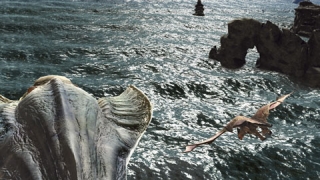
Popular Science has a feature about some of the challenges preventing us from making realistic games. Maybe not so insightful since it doesn’t provide a good overview, but it’s a nice read on some new technologies in development.
New Aquaria video
… This game is quickly climbing to the top of my “most anticipated”- list.
World of Goo
Kyle Gabler of the Experimental Gameplay Project is developing one of the most successful concepts further (which is kind of the point of prototyping) and brings us World of Goo!
It’s going to be interesting to see if he manages to keep it interesting. Tower of Goo was brilliant, but in a fun-in-fifteen-minutes- kind of way.
Games for Children
I just played through Megaman 8 (no, I’m not going to write a reflection of it – I’ll get to why in a minute) and something occured to me. When I was a kid and played frustrating videogames, I’d get angry and shout at the screen. My dad, presumably thinking I might become violent, threatened to take the games (and did so on some occasions), saying that it “isn’t the games’ fault”. I now know he was wrong, some games are unfair and frustrating due to bad design, and not because they’re supposed to be “challenging”.
We usually chalk this off as remnants of a low-tech or coin-op arcade age, either the technology provided was so limited that games couldn’t contain much content and needed to force the player to try again in order to achieve some respectable playtime, or you just wanted the player to replay several times because each time meant another quarter. But those things should’ve disappeared more than 15 years ago. What I am suggesting is that good design is traded for cool features and name recognition when making games for kids – much in the same way as you’re more likely to find giant robots or dinosaurs in children’s TV shows than a coherent story or rewarding dialogue.
Megaman 8 is the perfect example of this. It uses lots of bright colors and childish characters, it contains haphazardly thrown-together pieces of different gameplay – impressive when you first look at it, in reality someone just forgot to kill his darlings. Of course, there are more recent examples (Sonic the Hedgehog for 360/PS3), and whether most children actually care about good gameplay is up to debate. Seeing how they aim to be something different than “adult” games, it doesn’t seem like a good idea to judge them by the same standards. In fact, I’m not sure it is a good idea to review and score them at all.
And finally, I am aware that there are lots of family-friendly games that have excellent design. Exceptions exist in movies as well, Pixar has done quite a lot of them.
Resident Evil 4
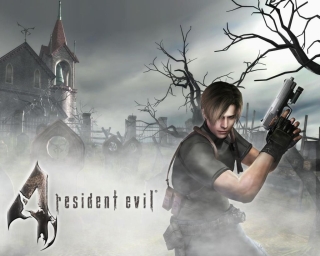
Resident Evil 4 got some game-of-the-year- awards back in -05, and a few months ago a new version was released for the Wii. Reviewing a new, critically acclaimed game two years after it’s release is kind of pointless, so I’ll get that out of the way quickly. Resident Evil 4 is a great game, probably the best single-player experience on the system (at least for those of us in Europe that haven’t got Metroid Prime yet … Although this only really leaves Zelda. Still, saying it is better than Twilight Princess means something). The first Resident Evil game more or less brought the horror genre to videogames so not being a fan, I was reluctant to try this game but the solid action/adventure gameplay won me over. And it should be said, even though I’m not as fond of the American Superhero Protagonist caricature as Capcom seems to be, Resident Evil 4 is very atmospheric and engaging.
What is really nice about Resident Evil – and for that matter, horror games in general – is how they use the interaction parts of the game to invoke feelings in the player. Using the same techniques used in movies to make the player feel for characters is one thing, but being forced to rationalize every shot fired because you don’t really know when you’ll be able to refill your short ammo supply creates a feeling of paranoia that you can’t really get if you don’t have the choice.